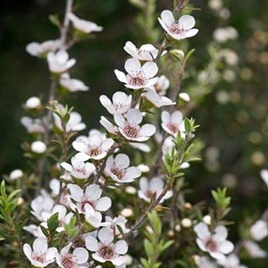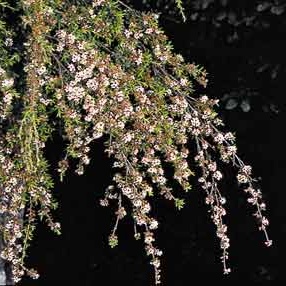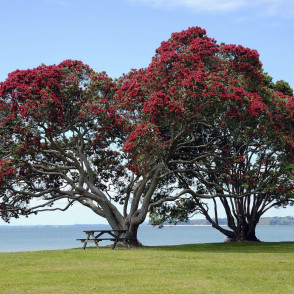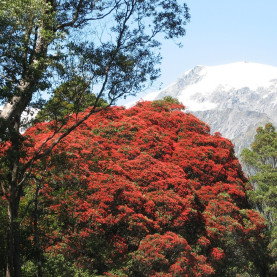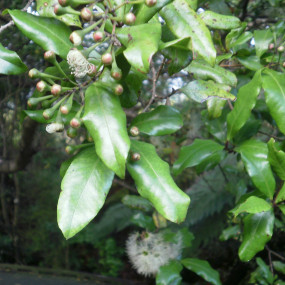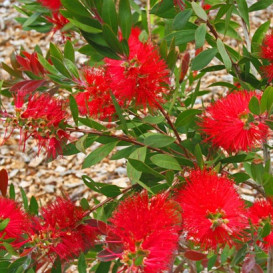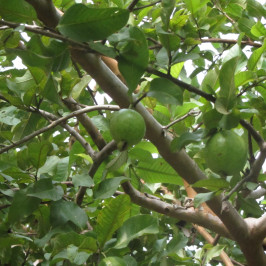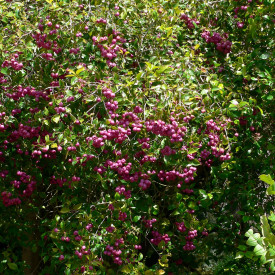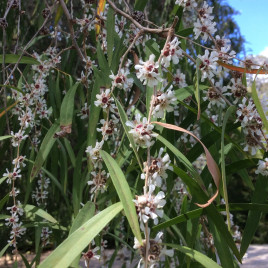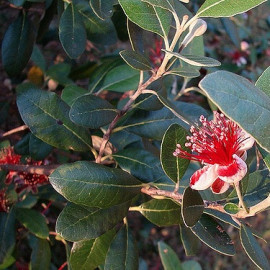What is a myrtle plant?
Find out what plants are affected by myrtle rust and how you can identify them
Karin van der Walt, Conservation and Science Advisor at Otari Native Botanic Garden in Wellington discusses what myrtles are and why they are important to New Zealand’s biodiversity.
All myrtles are woody, with essential oils, and evergreen leaves. The flowers have a base number of five petals, though some are minute or absent. The stamens are usually very conspicuous, brightly coloured and numerous.
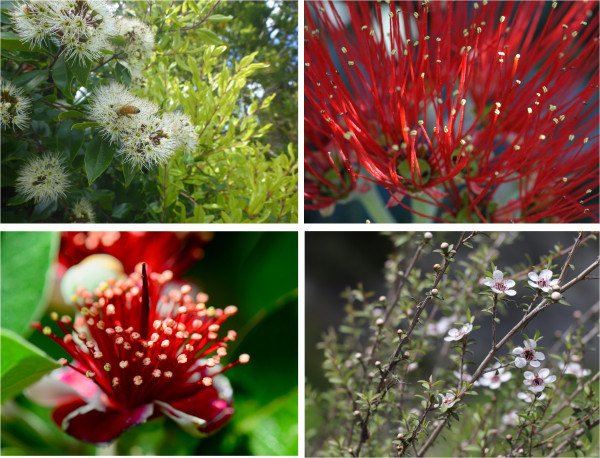
A collage of trees from the myrtle family that grow in New Zealand. Top left: Barlett's rata (Photo credit: Karin van der Walt, Otari Native Bush). Top right: pōhutukawa, bottom left: feijoa (Exotic), bottom right: mānuka.
New Zealand has 37 native myrtles, including pōhutukawa and rātā, mānuka and kānuka, ramarama and swamp maire. 25 of our native species are endemic, which means that they can’t be found anywhere else in the world.
You can use the Identify myrtle rust guide to help identify myrtles and myrtle rust.
Additionally, Manaaki Whenua – Landcare Research and Biosecurity New Zealand have partnered in the development of the NZ Myrtaceae Key – a free app that makes it easy for citizen biosecurity volunteers to identify susceptible plants and keep an eye out for the fungal disease myrtle rust.
Find out more and download the app
Find links to the most common and well-known myrtles in New Zealand below.
Natives
|
|
|
|
|
|
|
|
Rohutu: Lophomyrtus obcordata or Neomyrtus pedunculata
|
|
|
|
